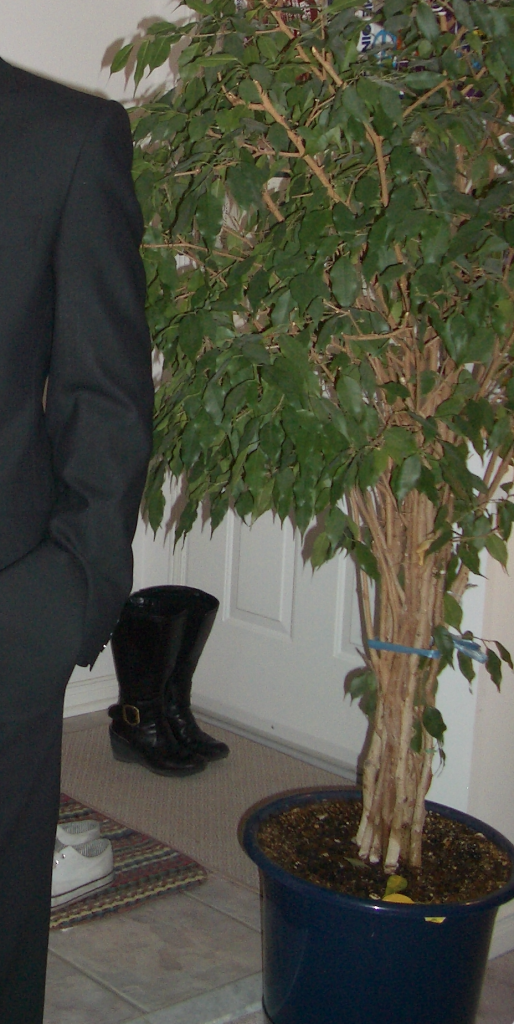Morgan Housel is one of my favourite writers. Both his (company’s) blog and his book has inspired me think more simply and no single writer has been more of an inspiration to me.
I’ve picked up a lot of invaluable insights into writing, investing and life from him in the past few years. I aspire to write as clearly and as lyrical as him. (Morgan, if you’re reading this, please continue the great work. You can be sure I’ll be reading all of it.)
If this is the first post you’ve stumbled upon regarding the topic of plants and investing/business, then you might want to check my other thoughts here, here, here and here.
It’s definitely confirmation and recency bias that I associate the houseplants that I’m learning about and the wider world of business and investing, so there is major room for building analogies where there is none.
With that said, I did want to add one thing that struck me as yet another possible parallel between plants and businesses. But let me start with one of the stories from Housel’s latest blog post.
In the article, Too Much, Too Fast, Too Soon, Housel draws an analogy of the biggest (known) human to have walked this earth and businesses. That person was Robert Wadlow and because of a genetic defeat, he grew to 3 or 4 times the size of an average man.
Wadlow lived a very painful life, needing crutches and supports to walk or even stand.
Morgan used this example to illustrate what he calls “a most convenient size”. Wadlow is a living example that the human form was not meant to grow that fast and the frame of the body isn’t able to handle that size.
He then used that example to parallel how businesses too have a most convenient size. Starbucks, under founder Howard Schultz got carried away in building new stores in the 2000s. When the Great Financial Crisis hit, the sales and stock both took a beating and stopped the trend. Schultz reflected later on in his book, Onwards, that that strategy was flawed with their focus on growth as a strategy in and of itself.
There is indeed a lot of parallels to draw between these two things, the human body and businesses. But I think there is less parallel there, than there are parallels between the plant kingdom and businesses.
I’ve made the many analogies before, how plants propagate, how plants need a few key conditions to grow. But the one thing that is a clearer parallel between plants and businesses is that they do grow and that they can more often than not, grow indefinitely.
Plants don’t age like humans and animals do.
Plants like businesses are seasonal (though some would like to say they are perennials.) But given the right conditions, they can live forever. Sure there is a most convenient size, beyond which the plant has matured and doesn’t necessarily grow further, but it remains that way, alive, healthy and thriving potentially forever.
The only things that can probably kill a well-meaning plant is of course deliberate attempts to uproot it, infestation, major climate change or by acts of god (like hurricanes) where destruction of whole ecosystems can make a plant species go extinct.
The best businesses, like plants, are the ones that are easy-to-care, perennial and that can grow forever. You just need the right conditions and to acquire them at a reasonable price. They need to be free from pests (god is that ever true) and be mature enough that you know they can survive a storm or two. If you’ve found the right “plant”, you’ll be sure you can keep it forever.
I largely agree with Housel and Schultz; the focus is not to grow for its own sake.
But I would suggest that Schultz was a little hard on himself. Starbucks was doing fabulously in the early 2000s (coincidentally when I worked as a partner and barista during my college days) and it made sense to allocate capital to opening new stores (i.e. propogation). If you saw that each new store’s ROI was excellent, wouldn’t you be making the same capital allocation decisions too?
To me, it speaks more to Starbucks as a great “plant” then anything else. Even making such a big capital allocation mistake (in hindsight), the company not only recovered, but thrived in the 2010s. They are now growing at similar rates in Asia, particularly China with moderate success.
I would say Starbucks has the characteristics of that wonderful business, characteristic of a wonderful houseplant. It speaks more to how Starbuck’s most convenient size is rather large, it just didn’t plant the right seeds looking backwards from the GFC of the 2000s. Same strategy (more or less), different location. (Even the best plants need expert pruning from time to time.)
Given the right conditions, a great plant will continue to grow and/or thrive indefinitely. In the case of Starbucks, it’s planting the seeds in the right locations, pruning and propagating along the way.
Post-script: A childhood friend of mine moved away when I was nine (though we remain friends, since he’s moved back for school and once again moved away!) His whole family moved, but among the cherished items they didn’t want to move with them but still keep was a big tree-like plant. I didn’t care for it much back then or had much interest in it except that it has kept guard all these years from house-to-house. The tree grew too alongside me. My Dad would regularly prune it back when it became too thick; the most recent time I think there was too much pruning. But it grows and it grows back and has survived our unintentional neglect and our intentional care where it wasn’t the right conditions for it. It remains a wonderful houseplant and soldiers on…
